“Injection molding can convert ceramic materials into robust and aesthetically appealing products. It is about transforming the earth’s simple clay into complex, high-precision components.”
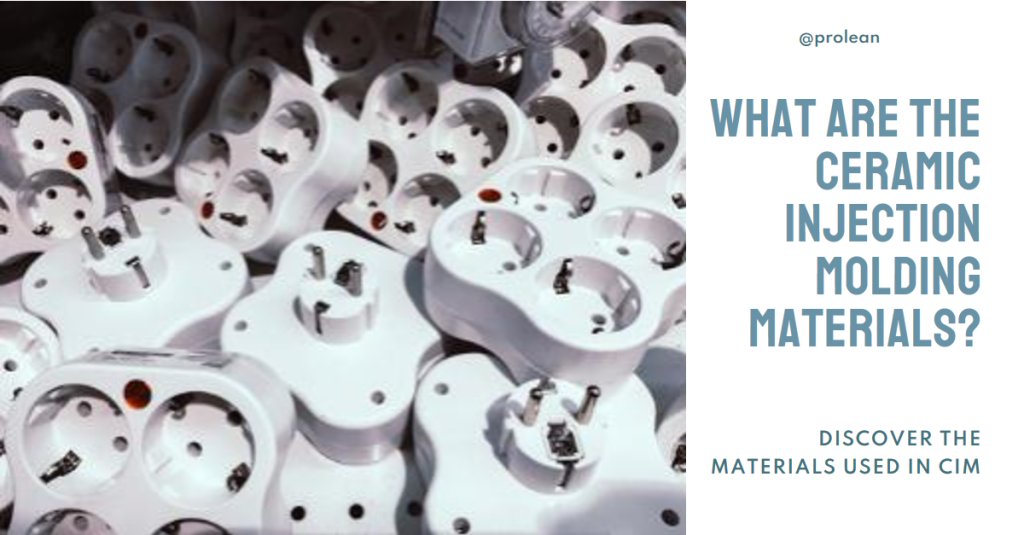
You might think that injection molding materials are only thermoplastic, thermosetting plastics, and metal, but they can also mold different ceramics. Ceramic molding is distinct from plastics in terms of initial preparations. The plastic molding uses pallets or small pieces of raw material. On the other hand, ceramic injection molding materials needed to be powdered and mixed with binding agents and additives.
Furthermore, this article will elaborate on various ceramics materials for injection molding, including binding agents and additives, and how to choose the right one.
What is Ceramic Injection Molding(CIM)?
Let’s start with what is injection molding. It is the manufacturing process that shapes the raw material by injecting it into the mold of negative geometry. Similarly, Ceramic injection molding refers to converting raw ceramic materials into desired shapes by injecting a mixture of ceramic powders and a binder into a mold. Then, the mold is heated and solidified into the shape. The heating temperature could high as 2700°C, depending on the ceramic type.

Ceramic injection molding process
After molding, the thermoplastic material is carefully extracted from the part through a thermal or chemical process. Then, this leaves behind a porous ceramic component. Finally, parts go for sintering in a high-temperature furnace. Sintering densifies the material, enhancing its strength and structural integrity.
Next, CIM is also known as powder injection molding because ceramic powder form is injected during the process. It combines the manufacturing capabilities of injection molding and strength, heat & thermal insulation, and chemical inertness of ceramic to create suitable components and products.
Three Types of Ceramic Injection Molding Materials
The injection molding material for ceramic molding typically involves three types of materials: ceramic powder, binding agents, and additives. Ceramics are the base material, while binding material provides the moldability, and additives facilitate the binder removal and enhance the flow properties and strength.
Material 1. Ceramics
These are the materials that will take the functional shape after molding. Based on the required properties in the final product and other specifications, you have several types of ceramics to choose from. Some examples are Carbide ceramics, mullite ceramics, silicon nitride ceramics, etc.
Which types of ceramics to choose? It depends on factors such as required physical and mechanical properties, the intended application of the molded ceramic parts, and moldability. For instance, silicon carbides are appropriate for high-temperature applications, whereas silicone nitride is for high-strength applications.
Material 2: Binding Agents or Materials
Binding agents are those materials that are moldable into complex shapes. These materials are mixed with ceramic powders to form a feedstock during the injection molding process. The typical binders used in ceramic injection molding are Polyethylene (PE), Paraffin wax, Polyacetal, Polyvinyl Butyral (PVB), and Styrene-Butadiene Rubber (SBR).
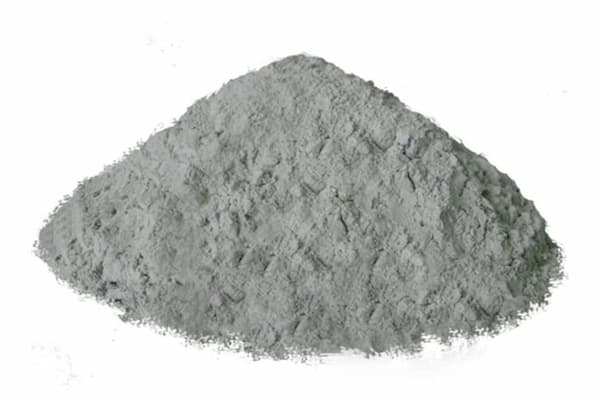
Binding chemical
The primary role of the binding material is to facilitate the plasticity and flowability of ceramic powders. After injection molding, the binder helps in ‘green body’ formation – a shaped part that holds together before sintering. Thus, it also enables the de-binding after solidification.
Material 3. Additives
These are supplementary materials combined with the ceramic powder and binder to enhance or impart specific properties to the feedstock or the final product. Unlike binders, additives serve specialized functions in the molding process. There are many additives, each with a unique purpose.
Some popular additives include plasticizers, lubricants, deflocculants, stabilizers, wetting agents, colorants, and dispersants. Here, which one(or combination) to use varies on required properties, ceramic material type, final application, and to solve the specific requirement.
Are All Ceramics Compatible with Injection Molding?
No! All ceramics are not compatible with injection molding. Every ceramic type contains different compositions and behaves during the molding process accordingly. Ceramics like silicone cardine, Zirconia, and aluminum are moldable into desired parts. In contrast, ultra-hard and high melting point ceramics like boron and tungsten carbide.

Ceramic injection molded parts
Moreover, a ceramic is only feasible for injection molding if it has three fundamental properties. These properties include adequate flowability of the ceramic feedstock, stability during de-binding and sintering, and a balance of ductility and strength. Conversely, if ceramic is highly porous, ultra-hard, and has a high melting point, it is unsuitable for molding.
Try Prolean Now!
What are Common Ceramics Used in Injection Molding?
Several types of ceramics are converted into components or products to address the desired applications. Each type holds some distinct properties and is suitable for specific application areas. As a result, ceramics injection molding materials can cover a range of applications
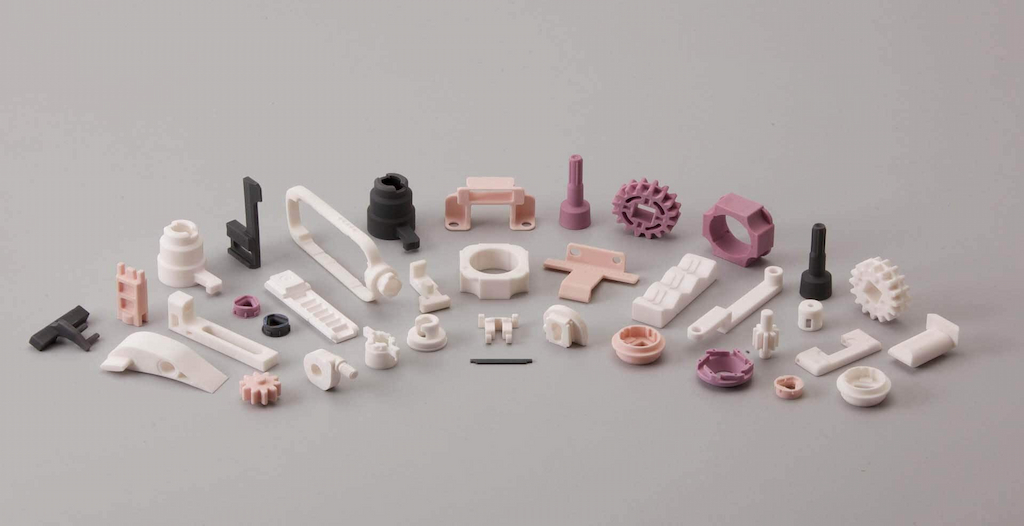
Zirconia injection molding parts
The following are some Injection molding ceramics:
1. Silicon Carbide (SiC)
Silicone carbides are renowned for their exceptional hardness, thermal conductivity, and resistance to wear & oxidation. These properties make them suitable for high-stress and high-temperature applications, such as semiconductor manufacturing, automotive braking, and furnace components.
Furthermore, you can use PP, PEM, or POM as a binding binder, plasticizer, and dispersants as additives for SiC ceramic.
2. Alumina (Aluminum Oxide – Al2O3)
Alumina offers high hardness, electric insulation, thermal stability, and chemical resistance. Thus, alumina injection molded parts are popular in electric insulators, implants, surgical tools, sealing, valves, and microelectronics. Next, some thermoplastic binders and plasticizers or wax are suitable for mixing to prepare the feedstock.
3. Zirconia (Zirconium Dioxide – ZrO2)
This ceramic offers considerably higher strength and fracture toughness than most other ceramics. Zirconia is biocompatible and highly resistant to wear and abrasion. Its applications are mainly medical injection molding parts like implants and surgical parts. It is also preferred for manufacturing industrial cutting tools, bearings, valves, jewelry, and decoration items.
Furthermore, the binder options for ZrO2 are thermoplastics like POM and PE. Whereas wetting agents, plasticizers, or dispersants can be used as additives.
4. Silicon Nitride (Si3N4)
This ceramic type holds exceptional mechanical strength and toughness, especially in high-temperature conditions. Next, it is low-density ceramic and provides wear and shock resistance. The injection molded silicone nitride parts are preferred in automotive & aerospace parts, industrial bearings, and some high-speed cutting tools. While PP and PE are the best options for a binding agent, lubricants and plasticizers are the appropriate additives.
5. Mullite (Aluminum Silicate)
Mullite stands out for its high thermal stability, resistance to chemical attack, and minimal thermal expansion. As a result, these properties make molded mullite parts suitable for refractory components and glass manufacturing furnaces. For mullite injection molding, PE and POM are binder options, while lubricants, plasticizers, and dispersants are the right additives.
Binder Materials for Ceramic Injection Molding

Parts after de-binding
As previously mentioned, binders are combined with ceramic powder material to enhance the flowability and moldability of feedstock. Several binding materials or agents are available to mix with raw ceramic. Now, let’s break down the types of binders in detail;
1. Thermoplastic Binders
These are the most common binders to mix with raw ceramic powder. They melt and flow under heat, allowing the ceramic powder injection into molds. They provide excellent flow properties and are easily removable during the sintering.
Common thermoplastics include
- Polyethylene (PE)
- Polypropylene (PP)
- Polyethylene Glycol (PEG)
- Polystyrene (PS)
- Polyoxymethylene (POM)
Meanwhile, the choice of thermoplastic binder depends on the ceramic material and the desired properties of the final product.
2. Wax-Based Binders
Wax-based binders are low-melting point binders that offer excellent shape retention and ease of removal. However, they provide less strength to the green body than thermoplastic binders. Moreover, wax binders are ideal for simple designs and lower processing temperatures.
- Polyethylene wax
- Paraffin wax
- Microcrystalline Wax
- Carnauba Wax
- Montan Wax
Another advantage of these binders is that they make the de-binding process easy. The wax can be simply burndown to remove from solid ceramic part. However, incomplete binder removal can cause porosity.
3. Elastomeric Binders
Elastomeric are rubber-based materials, some used as binders in molding, especially in complex or thin-walled designs. Elastomers impart elasticity that reduces the likelihood of cracks forming during processing. Thus, these binders enhance the flexibility and toughness of the green body.
- Styrene-butadiene rubber (SBR)
- Silicone Rubber
- Ethylene Propylene Diene Monomer (EPDM)
- Polybutadiene (PB)
- Nitrile Rubber (NBR)
Furthermore, elastomers can be more challenging to de-binding completely and require specific conditions to avoid damaging the part.
4. Water-Soluble Binders
As the name suggested, these can be dissolved in water, making the de-binding process straightforward and less hazardous. Conversely, they provide less strength to the green body.
- Polyethylene Glycol (PEG)
- Polyvinyl Alcohol (PVA)
- Polyvinyl Pyrrolidone (PVP)
- Dextrin
Water-soluble binders are suitable in rapid de-binding scenarios and can be combined with other binders.
Click here to download: Ceramic Injection Molding Materials List
Try Prolean Now!
Ceramic Injection Molding Additives
Additives have a diverse role in CIM. They enhance the role of binders with the properties and appearance of the final product made from ceramic injection molding materials. Next, additives also have significance in de-binding and sintering processes.
Here are the common Ceramic Injection Molding Additives:
- Plasticizers: Firstly, this additive enhances the flexibility and moldability of the ceramic-binder mixture. Secondly, it reduces the risk of cracks forming in the green body. Thirdly, improve the flow properties of the feedstock.
- Dispersants: They provide a uniform distribution of ceramic particles within the binder. Subsequently, they facilitate a consistent and homogeneous mixture.
- Lubricants: Their role is to reduce friction during the injection molding process to establish a smoother flow. Lubricants also make the release of parts easy.
- Colorants: Colorant additives are essential for aesthetic purposes. They provide colors to the ceramic parts.
- Wetting Agents: Improve the binder’s ability to coat and adhere to the ceramic particles.
- Other Additives: Reinforcing fibers, biocides, antioxidants, deflocculants, and surfactants.
How to Choose the Right Ceramic Injection Molding Materials: Step-by-step
The raw ceramic properties directly impact the final part’s quality, functionality, and price. Thus, it is essential to choose the right ceramic type. So the part or product can fit the requirement. Similarly, adding the appropriate binders or additives is equally important.
Choosing ceramics materials is slightly different from other injection molding materials. Here is a step-by-step elaboration to guide you through the right ceramic injection molding materials.
Step 1: Identify the Requirements
First, identify the requirements of the intended application. It includes considering factors like operational conditions, mechanical stresses, temperature fluctuation, and chemical exposures.
Step 2: Choose the Ceramic Material
Select a ceramic material based on the application requirements that align with the required properties, such as thermal resistance, mechanical strength, and wear resistance.
Step 3: Examine the Material Properties
Examine the chosen ceramic material’s properties in detail, including its behavior under different conditions, sintering characteristics, and compatibility with binders.
Step 5: Choose the Appropriate Binder
Select a binder that is a suitable or ceramic material. The binder should provide good flow properties, require green-body strength, and be removable during de-binding phase.
Step 5: Identify the Required Additives
Identify additives that can enhance the performance of the ceramic-binder mixture. For instance, plasticizers enhance flexibility, dispersants provide uniformity, and other additives are beneficial according to specific requirements.
Step 6: Test and Validate Compatibility
Finally, tests will be conducted to validate the compatibility of the chosen materials. For example, assess the flow properties of the feedstock, the integrity of the green body, and the quality of the final sintered part.
We Mold Ceramic Parts for Diverse Applications at Prolean
Have you chosen which ceramic, binding agent, and additives suit your design requirement? If not, our experts can help you to find the materials that fit the intended application. At Prolean, we offer injection molding services for different materials, including ceramics, thermoplastics, and metals.
We have experience collaborating with diverse industries for ceramic injection molding parts, from automotive to microelectronics. Send us your design and request the injection molding quotes. Our engineers will handle your project with advanced injection molding equipment and a decade of expertise.
Read more: Silicone Injection Molding
Try Prolean Now!
Summing Up
The diverse choices of ceramics, binders, and additives make the ceramic injection molding material selection intricate. Although there are many options, each material should be compatible between them. For example, if you choose one ceramic, you should select binding agents and additives compatible with that ceramic. On the other hand, this diversity of Ceramic Injection Molding Materials allows the transferring of countless designs into desired parts or products.
FAQs
Can injection molding be used for ceramics?
Yes, ceramic Injection Molding (CIM) allows for the production of complex and precise ceramic components.
What are the standard ceramics for injection molding?
Standard ceramics for injection molding include alumina (Al2O3), zirconia (ZrO2), silicon nitride (Si3N4), and silicon carbide (SiC).
What is the significance of binders and additives in ceramic molding?
Binders and additives in ceramic molding impart flowability to the ceramic powder, maintain the green-body shape, and improve the properties of the final product.
What is the process of ceramic injection molding?
It involves mixing the ceramic powder with binders & additives, injecting it into molds, and then de-binding and sintering processes to create dense, precision ceramic parts.
What are examples of binding agents and additives?
Examples of binding agents are polyethylene and polypropylene, while common additives are plasticizers and dispersants.
Resources
- Empower Materials. (2022). A binding matter. Ceramic Industry Magazine. Retrieved from https://www.empowermaterials.com/news/a-binding-matter
- Gadow, R., & Kern, F. (2014). 2.06 – Advanced Manufacturing of Hard Ceramics. In Comprehensive Hard Materials (Vol. 2, pp. 207-230). Elsevier. https://doi.org/10.1016/B978-0-08-096527-7.00025-8

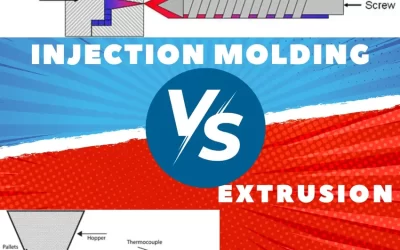

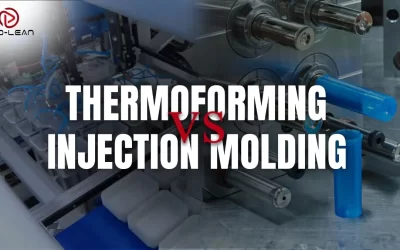
Well organized list! Can you suggest me which material can be best for injection molding of Custom Tea Cups!
Thanks Daniel! In Ceramic Injection Molding (CIM), three key materials are typically used:
Ceramic Powders: Such as alumina, zirconia, or silicon carbide, which provide the primary structure and desired properties of the final product.
Binding Agent: Usually a polymer-based substance, essential for maintaining the shape during the molding process.
Additives: These may include sintering aids or coloring agents, enhancing properties like density, strength, or aesthetic appeal of the ceramic cups.